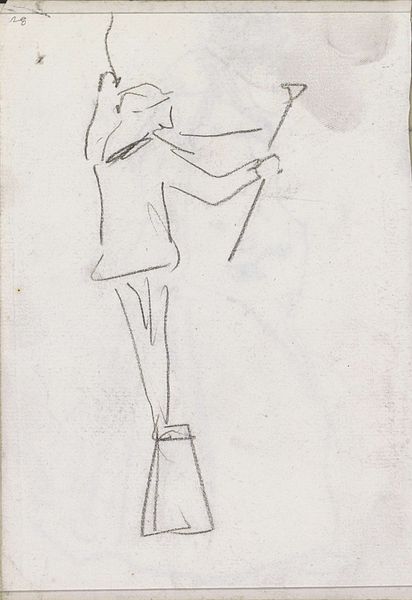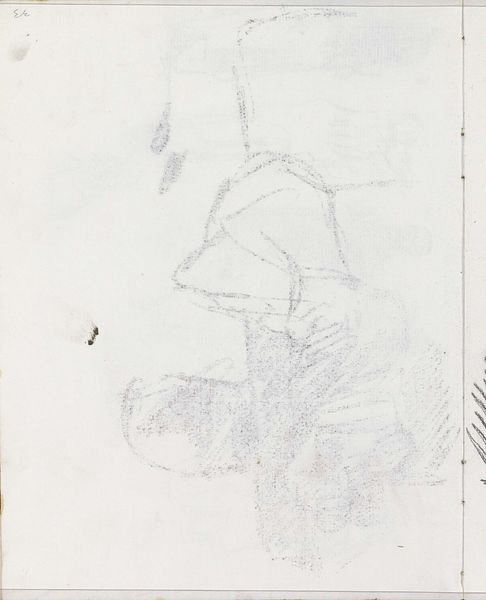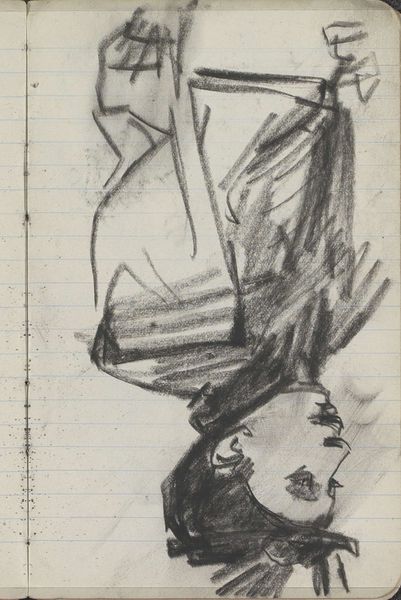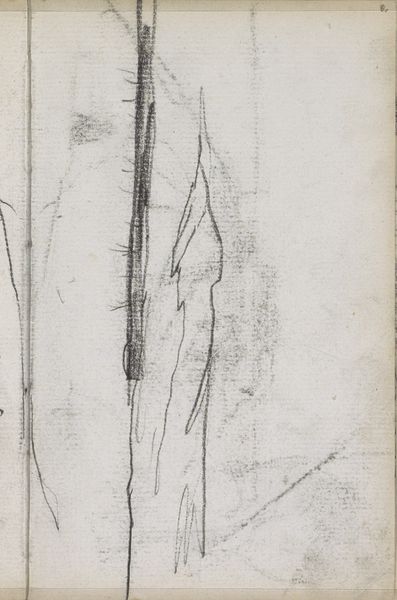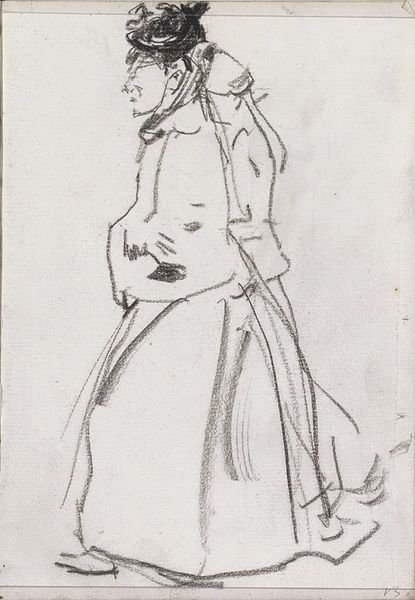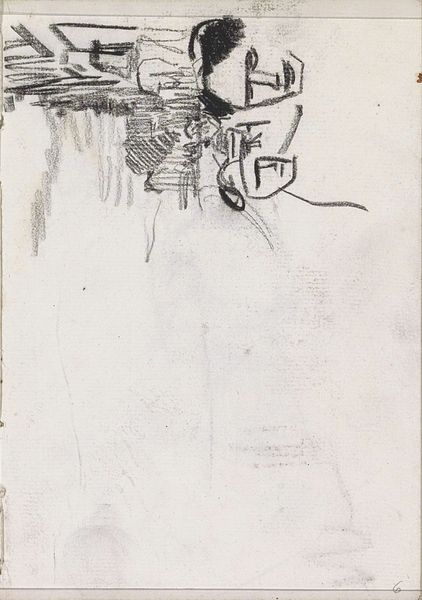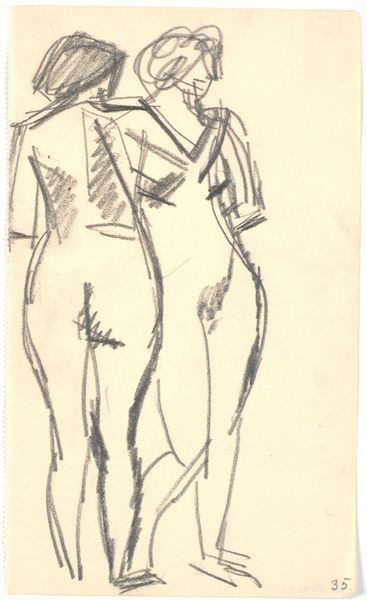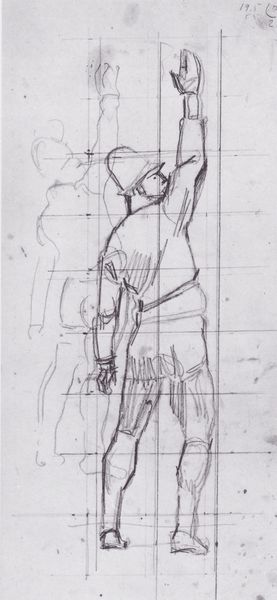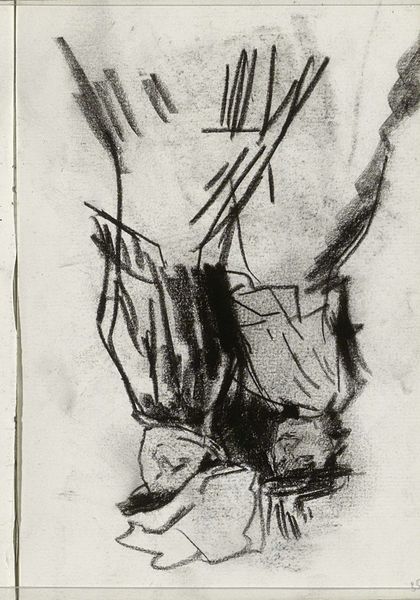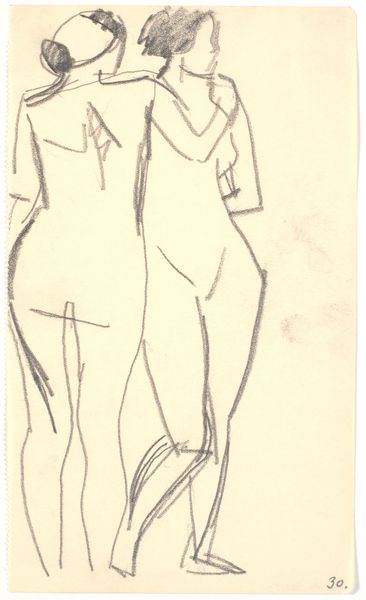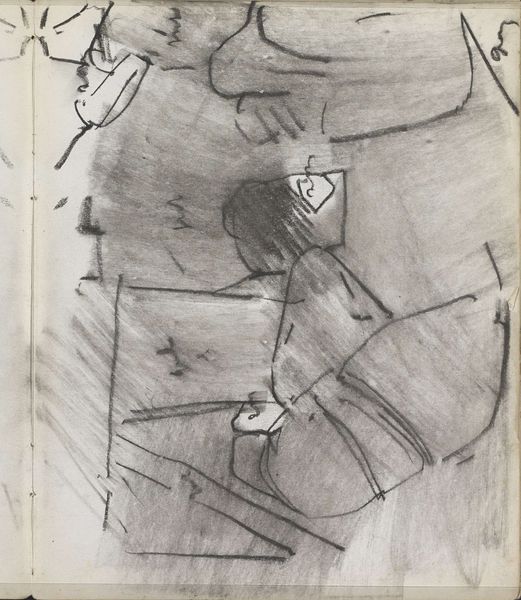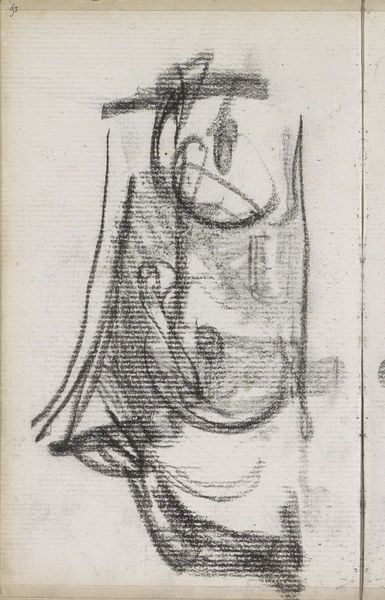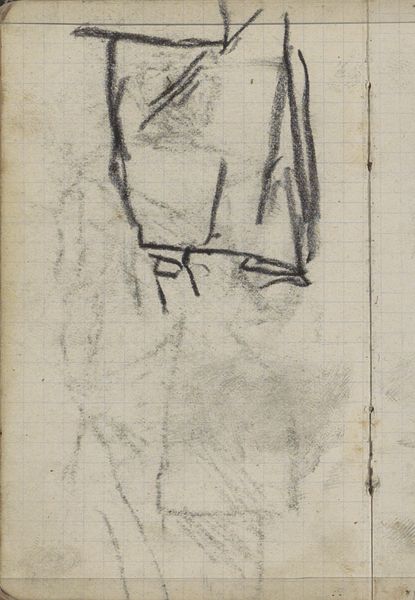
drawing, pencil
#
portrait
#
drawing
#
figuration
#
pencil
#
line
#
modernism
Dimensions: 40.6 x 12.8 cm
Copyright: Public domain
Curator: Here we have Ferdinand Hodler’s sketch, "Swearing to the Front," created in 1912. It’s a pencil drawing, capturing a figure in a moment of what seems to be great intensity. Editor: Yes, the upright gesture! His right arm extended rigidly upwards, he could be raising his hand for silence in a crowded room, or he might as well be casting some sort of magical spell... but, there’s this fragility, too, conveyed in the bare outlines of his body. Curator: The lack of detail, particularly below the waist, almost renders him spectral. It’s like Hodler is capturing not just a moment, but an ephemeral presence, evoking a state of transition or aspiration, as much as an embodied individual. Editor: I wonder, what symbols would someone at the time relate that hand gesture with? Was there some particular resonance with patriotism or some fraternal association...? Curator: Absolutely. Think about the broader context. 1912... Europe teetering on the brink of the First World War. This gesture becomes intensely relevant, possibly depicting allegiance, resolve, or sacrifice. What’s particularly moving, however, is Hodler’s line-based composition. Editor: The linear form gives that sense of both permanence and impermanence as a visual form itself! Something meant to be easily replicated like the distribution of a shared idea through symbol... A modern flag waving across borders. It makes it seem very prescient. Curator: It's the line as a symbol! And how these modernists manage to infuse seemingly basic visual components with symbolic significance that can evoke all the raw feelings that go along with it! Hodler transforms a sketch into a powerful symbol of... everything. Hope, despair, and duty bound up together. Editor: Exactly, it really embodies the potential of modernism as a bearer of cultural memory as well. A great study in cultural and emotive economy of means!
Comments
No comments
Be the first to comment and join the conversation on the ultimate creative platform.
